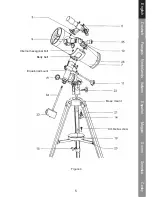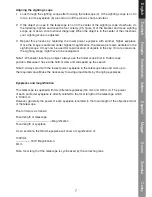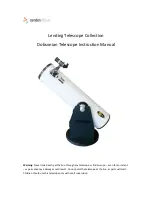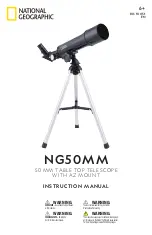
English
Deutsch
F
rançais
Neder
lands
Italiano
Español
Magy
ar
Suomi
Sv
enska
Česky
7
Aligning the sighting scope
1. Look through the sighting scope after focusing the telescope (4). If the sighting scope is not in
focus, turn the eyepiece (6) around on until the view is sharp and clear.
2. If the object you see in the telescope is not in the center of the sighting scope crosshairs, do
the following: tighten and loose the four screws (25, fi gure 2) of the bracket and move sighting
scope up or down, side to side or diagonally. When the object is in the center of the crosshairs
your sighting scope is adjusted.
3. Repeat this process by replacing the lower power eyepiece with another higher eyepiece.
Once the image is centered under highest magnifi cation, the telescope is also centered in the
sighting scope. It may now be used for rapid location of objects in the sky. On rare occasions,
the sighting scope might have to be readjusted.
Note 1: Whenever locating an object, always use the fi nder scope fi rst in fi nder scope
position. Because it has a wide fi eld of view and will speed up the search.
Note 2: Always start with the lowest power eyepiece in the telescope tube and work up to
the required value. Make the necessary focusing adjustments by changing eyepieces.
Eyepieces and magnifi cation
This telescope is supplied with two different eyepieces (H6 mm and H20 mm). The power
of each particular eyepiece is directly related to the focal length of the telescope which
is 1000 mm.
However, generally the power of each eyepiece is related to the focal length of the objective mirror
of the telescope.
The formula is as follows:
Focal length of telescope
---------------------------------- = Magnifi cation
Focal length of eyepiece
As an example, the H6mm eyepiece will show a magnifi cation of:
1000mm
------------ = 167X Magnifi cation
6mm
Note: focal length of the telescope is synthesized by the correcting lens.






















